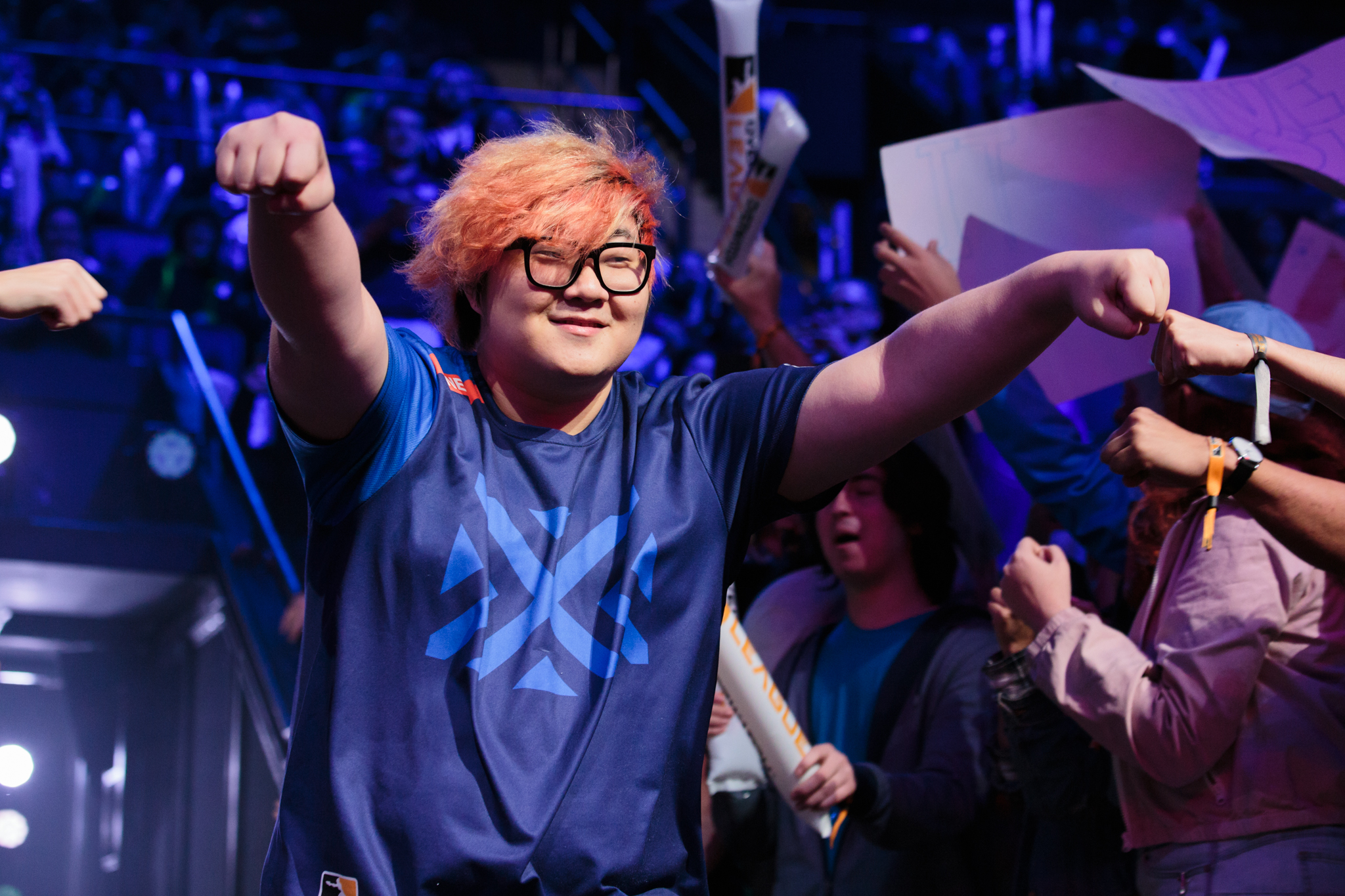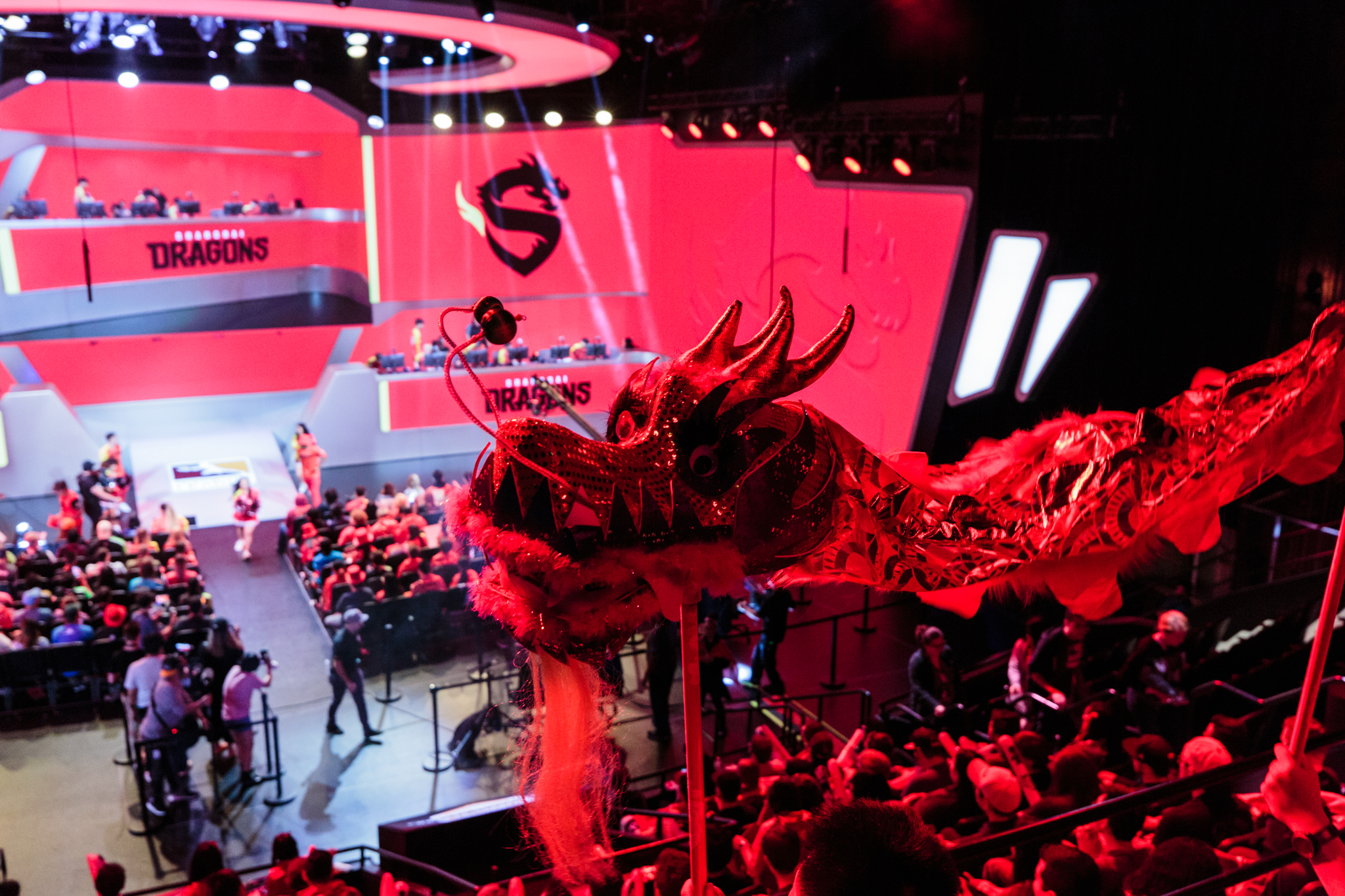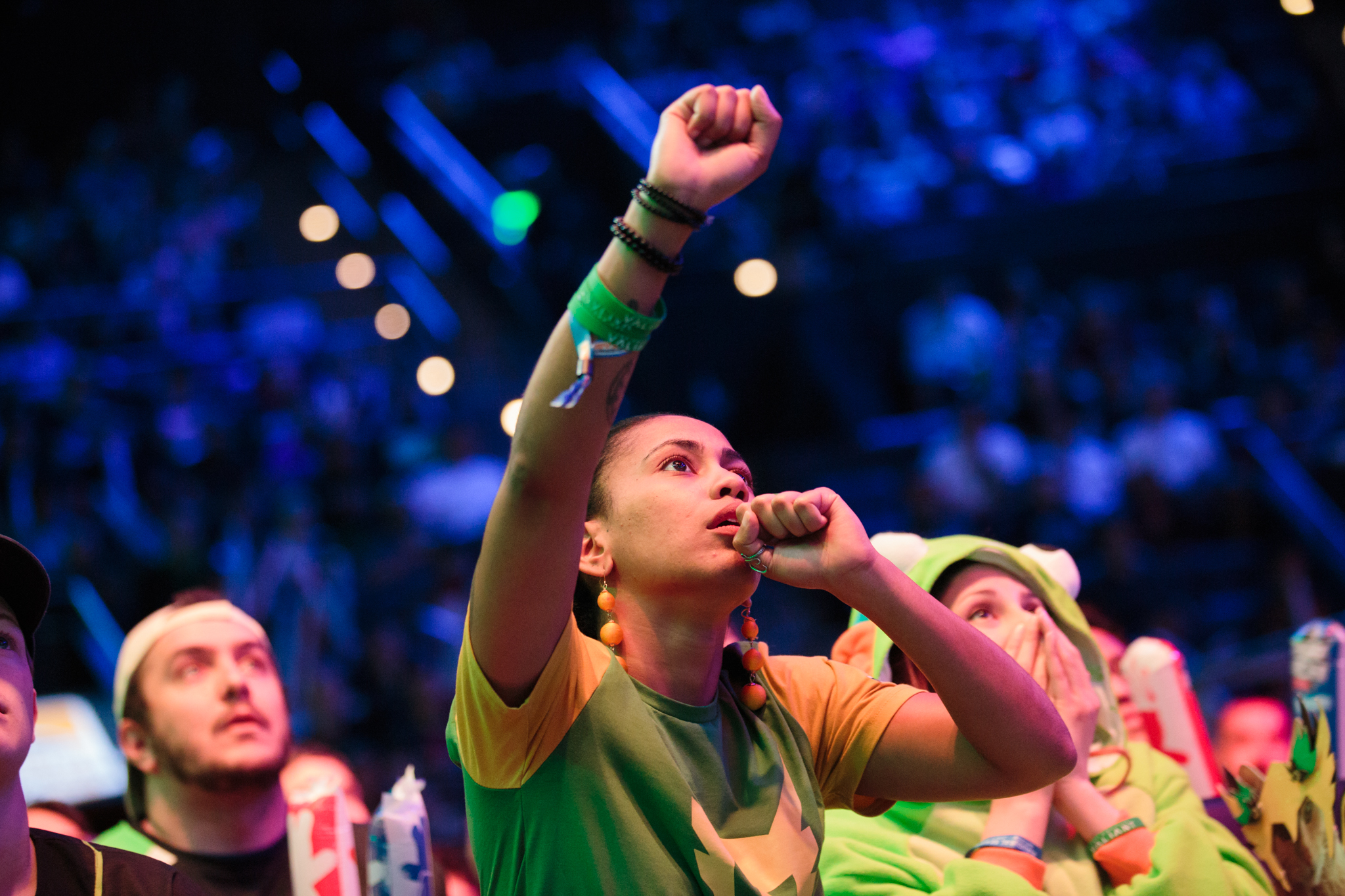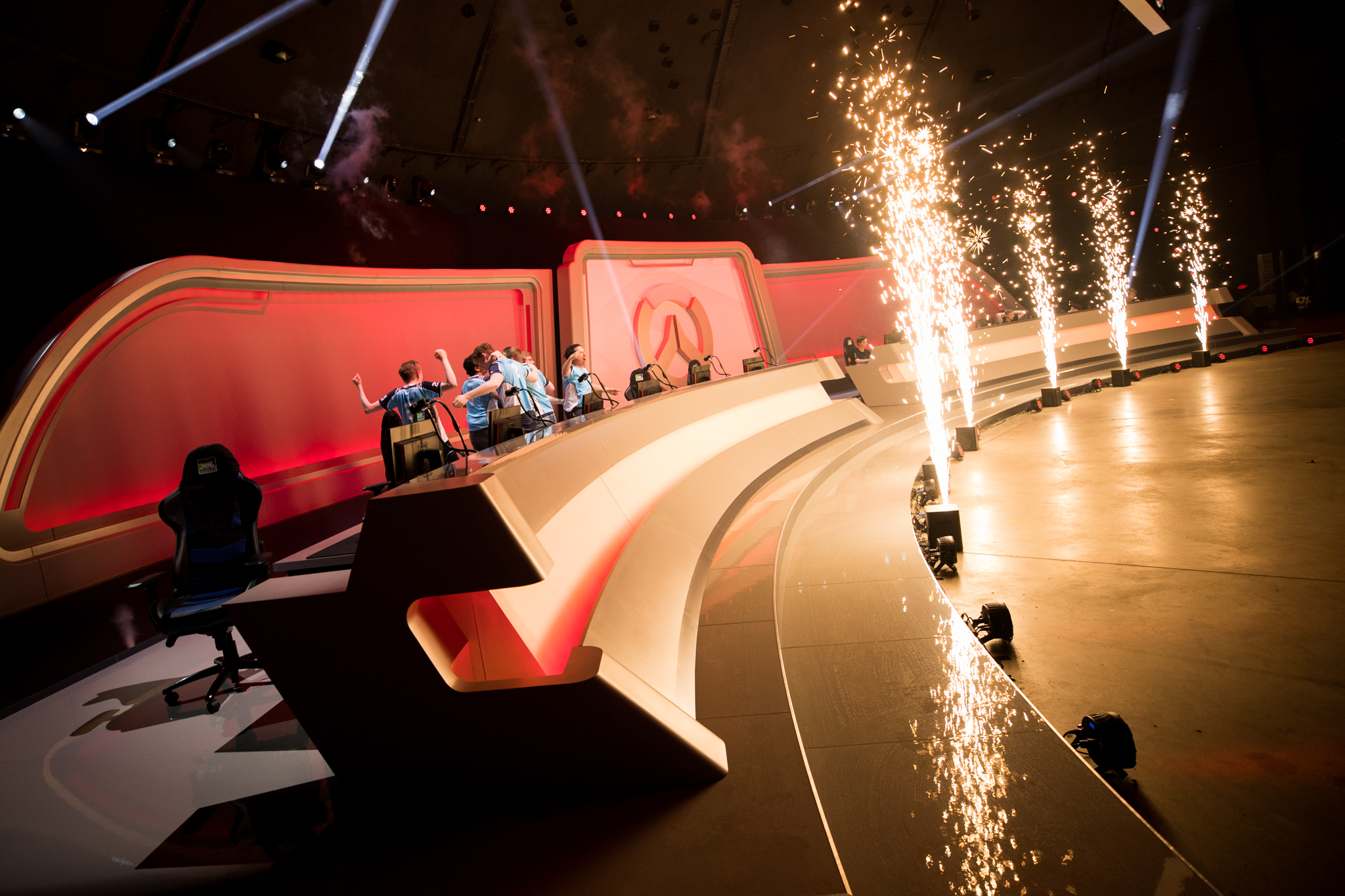eSports: The Misunderstood World of Competitive Gaming
In a sport where toxicity is a barrier to entry, we try to find the soul of competitive gaming.
In a perfect world, the raw emotion and skill on display at the 2018 Call of Duty World League Open in Dallas would have dominated headlines about the competition. You would have read about groups of friends banding together to take on the pros. You would have heard stories about kids wistfully staring at the main stage, hoping one day to be good enough to compete themselves. Maybe you would have even seen reports about tearful winners being presented like rock stars with assistance from a lighting and sound system that would make old Pink Floyd concerts look like middle school plays.
Instead, the headlines were dominated by threats of violence. Not the threats many of us have heard screamed over microphones during online Call of Duty matches but something far more sinister.
The weekend’s competition was interrupted by calls from someone who claimed to have planted a bomb in the Kay Bailey Hutchison Convention Center. As attendees made their way outside and reactions appeared online, shockingly few people seemed surprised at all. Instead, many saw this as another chapter in the familiar narrative of the toxic world of eSports.
“Toxicity” is the catchall phrase used to define the staggering levels of hostility and hate among some of the stars, fans, and teams of eSports. It’s an attempt to apply some kind of understanding to the severity of the worst incidents. Incidents like when TerrenceM, a black professional Hearthstone player, took the stage at a 2016 tournament and was greeted by racist jokes on Twitch chat alongside the spamming of an all-too-familiar word.
Those who spread hatred online have always had the luxury of doing so behind a wall of anonymity. Natalie Sest and Evita March, two Australian researchers, conducted an all-too-rare study on the psychology of online trolls. Their findings – that such actions can be attributed to poor social skills and low empathy – were remarkable in how unsurprising they were.
Read the Den of Geek SDCC 2018 Special Edition Magazine Here!
Recently, Overwatch pro Félix “xQc” Lengyel was kicked out of the Overwatch League for making offensive comments towards fellow players, league casters, and for using emotes in a racist manner during League streams. His excuse? “I was fucking born and raised by Twitch chat.”
The scariest thing about that statement is the inescapable truth of it. The worst aspects of eSports culture are just that. A culture. They’re a series of beliefs and social norms that are shared by certain groups of people. Considering 61 percent of United States eSports viewers are between 18-34 years old and 55 percent of Twitch users fall into that same age range, it means that we’re talking about a lot of young, impressionable people who make up the average eSports viewership; they are then subjected to those who practice a culture whose values resemble messages of hate, ignorance, and negativity.

Aspects of that culture may stem from the potentially dangerous competitive mentality of eSports players. Dr. Itzik Zur studied the mental health of eSports players and found that the mental and physical stress competitive gamers endure makes them prone to “frequent emotional fluctuations, more so than athletes in other sports.” He also suggested that those feelings of anger can be utilized by trainers to increase a competitor’s performance.
In Korea, it’s common for players to practice up to 14 hours a day. The mechanical nature of the most popular eSports games demands such intensity. Sometimes, players are even conditioned to treat socialization and emotional maturation as distractions.
“In a Korean team house in StarCraft II, you’re waking up at 10 or 11 a.m., everyone practices the same hours per day, you have team lunch breaks,” said StarCraft player Ryan “State” Visbeck in an interview with Complex. “You play soccer as a team. You do everything as a team. There’s no time at all to actually have a life.”
That’s a side of eSports that’s hard to process for those who look at gaming as a hobby. None of that excuses bad behavior from fans or players, but it does lend a level of understanding regarding the humanity that drives competitive gaming.
A lack of understanding may actually be at the heart of the toxic eSports narrative. Competitive gaming is nothing new, but it has absolutely exploded in popularity in recent years. This has led to a gold rush for the mainstream media, as publications everywhere race to claim their share of eSports audiences.
Some within the eSports community feel that the mainstream media has shed its integrity in order to hop on the eSports bandwagon. There are eSports fans who believe that certain reporters and outlets assigned to cover eSports are inherently cynical and even disinterested. Their perception of that industry is not entirely unfounded.
“I got some really bad advice about how to get into the eSports scene,” says eSports journalist Kevin Hitt. “That advice was, ‘Go in with your guns blazing and be aggressive. Go in with your guns blazing because memes and insults are everything in eSports.’”
That advice was given to Hitt in 2015 when he was transitioning from sports to eSports coverage. Since then, he has gone out of his way to learn the industry and form meaningful relationships with players and teams. However, doing so has required him to break through a thick protective barrier that surrounds the scene.
“Organizations are basically telling [eSports players], ‘Don’t talk.’ They don’t want them to say something damaging to their personal brand or the organization they play for,” says Hitt. “Media can set traps for young people in the questions that they ask. We can set them off.”

That distrust has manifested itself in unfortunate ways which have only broadened the gap between media and eSports players. The most notable of those manifestations is the traditional absence of all-inclusive post-game conferences in competitive gaming.
“In traditional sports, even the losing team does interviews,” says Hitt. “In eSports, they don’t do that. Losing teams simply just leave. I think that has to do with the organizations not wanting somebody in a bad place between the ears speaking. Maybe that 17-year-old who’s not media savvy yet is going to say something perhaps damaging to himself and the organization.”
The guarded nature of the eSports industry and professional gamers is more than speculation. Despite having reached out to several eSports players and organizations, we were unable to get anyone from professional gaming to go on record for this story.
While this is an aspect of eSports that is improving – Hitt credits Blizzard and the Overwatch League for allowing an impressive degree of media access – the lack of traditional channels of communication between media and players has contributed to an increase in articles about eSports drama. The worst of what is said is used to confirm larger – sometimes manufactured – narratives.
Sometimes the bias is all too overt, as in the case of Chester King, founder and acting CEO of the British eSports Association. He told Gamesindustry.biz, “I was introduced at an event once after someone did a great speech about traditional sports as someone who was going to talk about ‘the dark side of eSports.’ That’s not the intro we want. Others describe us as ‘the biggest niche in the world.’ No, we’re not that at all. We are eSports. Those in the industry hate being classified and put in a box.”
Team Dignitas manager and founder Michael O’Dell told Gamesindustry.biz that he’d “like to reverse the media’s thinking and show the cool stuff rather than the very tiny incidents of bad stuff that does sometimes happen to all sports.”
Easier said than done. Hitt points out that preventing readers from flocking to the negative side of eSports isn’t always easy in the digital age, especially when a bad act is on social media or Twitch before it’s ever picked up by an outlet.
“You have to understand that we’re in a technological age and that everybody is going to see when one person does something silly, and they’re going to extrapolate that and make the entire scene guilty by association,” says Hitt. “Reporting things like that needs to be accurate. It needs to make sure that it’s focused on the person that did the egregious act, and try not to paint the broad brush that everybody is like this person.”
The fact that audiences tend to respond more to negativity, both on social media and through the news cycle, has led to those who say something ignorant on Twitter garnering more attention than eSports’ best players. Hitt believes that “the number one most important thing to growing the game is giving access to the media.” The great shame of the relationship between media and eSports isn’t limited to a lack of growth, though. It’s that those who only know of eSports from what they read in headlines rarely get to hear about the exceptional people who make up the majority of competitive gaming.

Consider stars like Sasha Hostyn, a transgender StarCraft pro who recently became the first female competitor to win a Majors tournament and one of an elite group of North Americans to do the same. There’s also Tyler “Skadoodle” Latham, who helped Cloud9 become the first North American Counter-Strike team to win a Majors tournament. Over a million Twitch viewers watched him break down in tears during the post-game interview. And then there’s Jong-yeol “Saebyeolbe” Park, who has helped lead the New York Excelsior to a top spot in Overwatch League and did so with a picture of his wife on his keyboard.
If you truly want to appreciate the other side of eSports culture, though, don’t look up at the stars but rather at its fans. Not the people who spew venom on Twitch, but rather the supporters who show up to cheer for their favorites and live and die by their success.
“I just moved to New York in August and I didn’t know anyone,” says Arina Wu, a member of the Five Deadly Venoms, a New York Excelsior fan club for Overwatch League. “It was just natural to say, ‘Ok, it’s time to make friends.’ It’s totally the city-based thing that Blizzard was going for. It helped them connect many of the people from that city to that team. Now I’ve got a great group of friends and family.”
Fellow FDV member Mike Padro’s love for the NYXL is tied to his love for the city and what it represents.
“When you make it about a place that you’re so proud to live in, people have that sense of camaraderie and belonging,” Padro says. “Maybe the players aren’t from this place, but maybe I’m not from this place.”
Most eSports squads don’t typically attract a traditional fan club such as the Five Deadly Venoms. Yet, Overwatch League’s city format has brought out a sense of pride in some of the teams’ fans. The FDV club began as a small gathering at NYC’s Waypoint Cafe. Supporters squeezed into a small section between the PC game stations and the barista’s bar to cheer Overwatch’s NYXL. Clad in team jerseys and streetwear, the attendees spoke mostly through cheers, but found common ground in conversation over their shared amazement of the atmosphere. Even for eSports fans like Padro and Wu, events such as these felt different than anything that had come before. Even those who attended the event out of curiosity soon found themselves caught up in the energy.
“When we first approached the [new] venue (Mr. Wu’s Basement) about this party, they were like, ‘What are you guys talking about? You want to do a party for what?’” Padro says. “Let me tell you, at the end of the night when all things are said and done, the whole staff is like ‘That was awesome. I don’t even know what took place, but whatever that was, it was cool.’”
Arina believes that the city element of the League makes it easier for people to “have more stake in” the outcome. She thinks that helps them break down the walls that people sometimes have when they come to these events. As far as the group goes, they notice they’re attracting nearly every type of fan.

“We have people ranging from eight years old to well into their professional careers,” Padro says. “It’s been really cool to see how many women are in the room. You come to our parties, and the whole front row is women most of the time. You don’t always see that in other sports. With Overwatch League, they come because they play this game too.”
Despite the popular eSports connotation, neither can cite many instances of toxicity at the events. Wu believes there’s a simple reason for that.
“No one comes to these events and says ‘Oh, I’m going to be mean,’” said Wu “People are just more reasonable in person because you have a better read on who you’re talking to.”
There it is again… understanding. John Hubert, a former Rutgers football player, was a participant in the first intercollegiate game of American football. He famously said that “To appreciate this game to the fullest you must know something of its background.” Well, the background of eSports is passionate gamers. People who want to come together to compete, but also to share their passions.
“eSports fans that attend events are the most inclusive, wonderful human beings I’ve ever been around, and I mean that in all sincerity,” says Hitt. “In the three years that I’ve gone to live events, I haven’t seen a scuffle. I haven’t seen a fight. I haven’t seen a yelling match. All I see are high fives and people rooting their team.”
Toxicity is present in certain corners of eSports, but that doesn’t prevent eSports fans from cheering for the home team, the underdogs, the outsiders, the good guys, and promoting the idea that there is a future for eSports worth rooting for.
